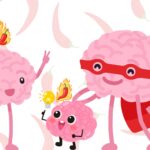Identifying mental health sickness is always complex since there are no visible symptoms like a physical sickness. Psychological health problems affect the way we think, feel, and behave. It becomes worse when the mind is concerned, and the body reacts to it. Stress and depression can hold us back from being the best version of ourselves.
The crisis is emerging as a result of global quarantines and a sudden shift to change in lifestyle. Since the outbreak of the pandemic, people feel more socially isolated, stressed, more anxious, and extensively emotionally exhausted. Given the enormous uncertainty, everyone is facing economically, personally, and professionally, where the rise in mental health issues is as predictable and alarming.
Recent news of Bollywood actor Sushant Singh Rajput’s death has shocked many of us. It was hard to believe that he killed himself even though having a successful career, money, respect, and penned down dreams. He gave up everything because he did not look forward to anything in his life due to depression. He was left alone, unheard, and unmanaged in depressed conditions. Mental health sickness and suicide are the leading cause of death among young adults and youngsters worldwide.
Our strategic efforts in creating awareness may help prevent such incidents in current circumstances and the future. Let us understand that change is situational, whereas evolution is psychological, where reorientation or self-redefinition takes place to incorporate necessary changes into life. Without an evaluation, a change is just a rearrangement of the furniture. Unless evolution happens, the difference won’t work.
Humans spent around 80% to 90% of their time within the built environment; hence the built environment plays an influential role in mitigating these adverse mental health outcomes through the activity-based program. Designed spaces affect mood, the way we see, hear, feel, and smell each design element we build to enrich sensory experiences. Broad design strategies are essential to creating spaces to promote love, joy, and happiness and prevent stress, depression, and anxiety. Built environments may provoke and nurture their well-being in which individuals can live to their fullest potential, cope with the normal stresses of life, work productively and contribute to their community leading to emotional sustainability as part of their lifestyle.

We cannot avoid discussing Bhutan, where emotional and sustainable lifestyles get equally transformed into Gross National Happiness (GNH), Gross to Product (GDP), and GreenHouse Gas (GHG). GNH is a holistic and sustainable approach to development that balances material and non-material values with the conviction that humans do not want to search for happiness.
That would be interesting to converse about how well-being gets established with an inclusive and integrated approach through human health & fitness, a sustainable lifestyle, and the natural environment.


















